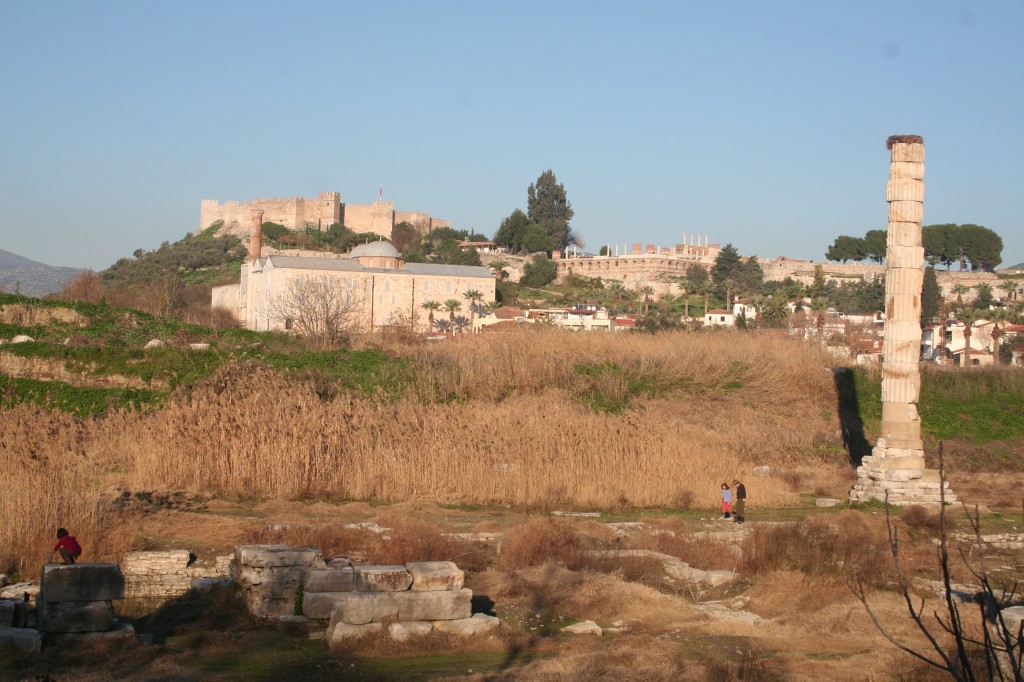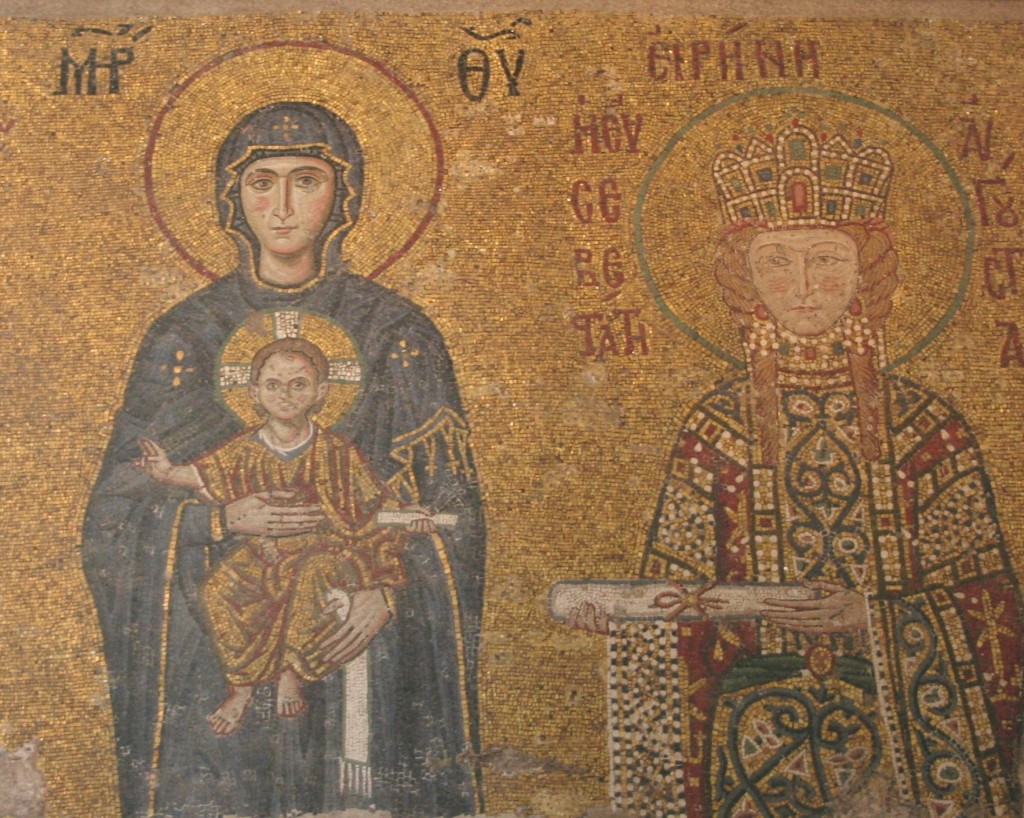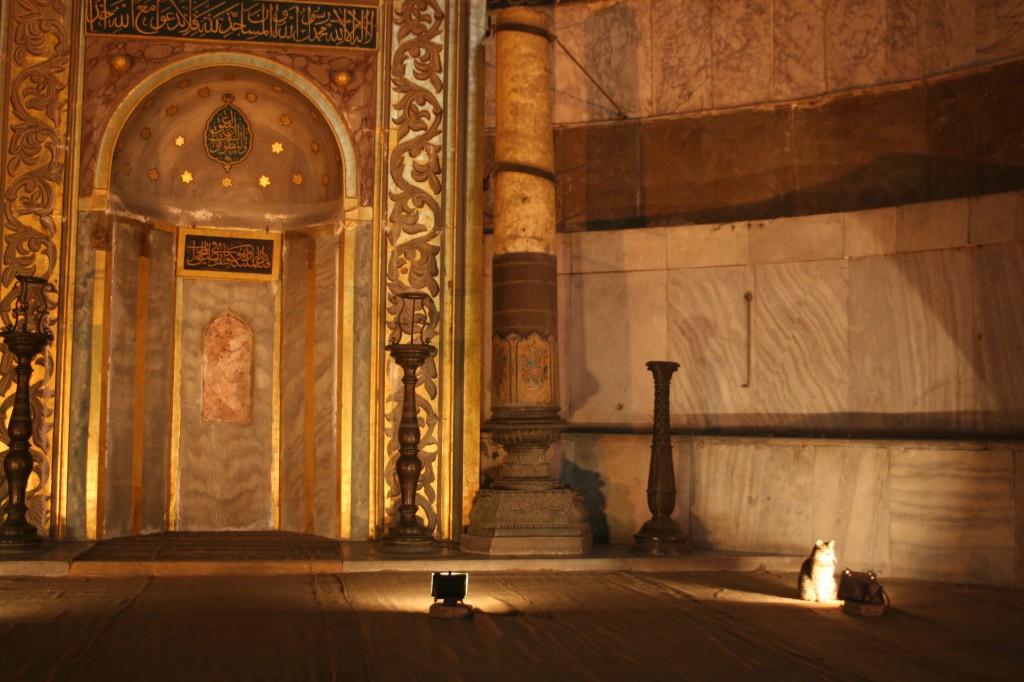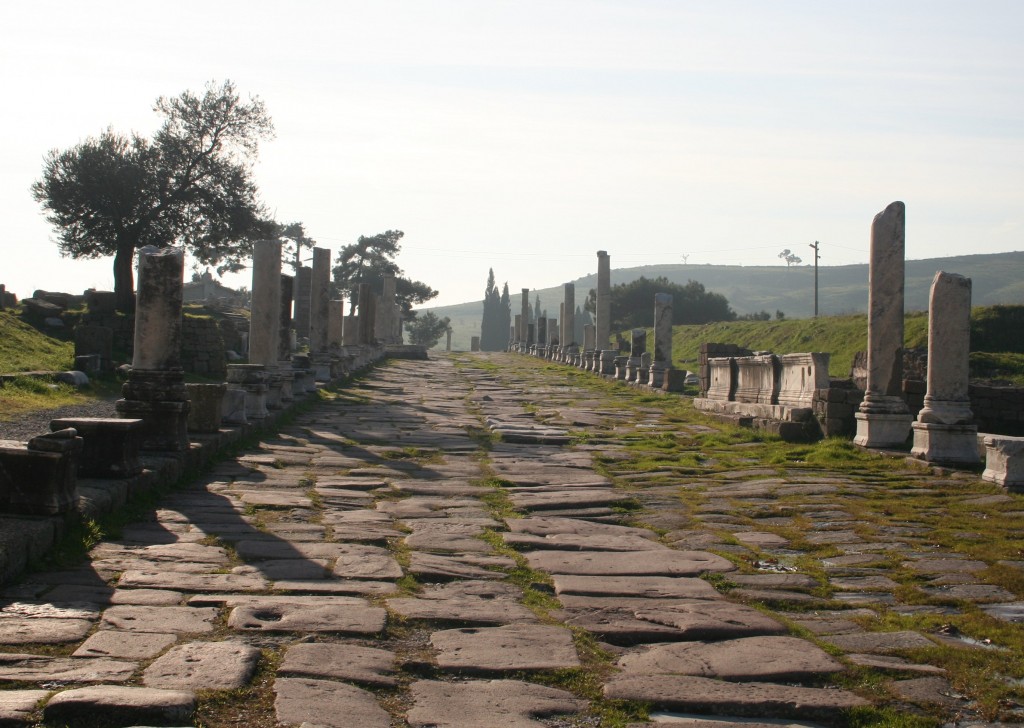After lingering many days in Istanbul, it’s time for us to travel to Ephesus. In doing so, we follow in the footsteps of countless pilgrims, for this site south of Istanbul (50 km south of the modern city of Izmir) has been a holy site for millennia.
One of the Seven Wonders of the World once stood at Ephesus—the Great Temple of Artemis, a massive marble structure three times larger than the Parthenon. Artemis was the Greek goddess of hunting, but in Asia Minor she became blended with Cybele, an Anatolian Mother Goddess of enormous power and influence.
![450px-Selçuk_statue_Artemis[1]](https://wp-media.patheos.com/blogs/sites/628/2011/02/450px-Sel%C3%A7uk_statue_Artemis11.jpg)
Thanks to the Temple of Artemis and the bustling port, the city of Ephesus grew large and wealthy. Beautiful stone buildings lined its streets, and a huge amphitheater and a stadium for gladiatorial games kept the populace entertained. At its height some 250,000 people lived at Ephesus, making this one of the largest cities of the ancient world.
Time (not to mention earthquakes and invading armies) took a heavy toll on Ephesus. Its once-busy harbor silted in long ago. All that remains of the Temple of Artemis today are just a few broken-down columns and a pool of stagnant water. But the ruins of the city are magnificent nevertheless, recalling not only the glories of its pagan past but also its role in the early years of the Christian Church. (More on that later.)
In the picture below you can see the remains of the Temple of Artemis, while on the hillside behind are the ruins of St. John’s Basilica and a Muslim mosque. I know of no other place in the world where the intertwining strands of religions are so visible. Anyone who thinks that their way of worshipping will endure forever would do well to stand on this spot to gain a little humility.
For today, let us pause for just a moment to remember the great Artemis, once an object of veneration and adoration. Look at her statue once again, if you will, for that strange and haunting image is worth further reflection. And even though her temple lies in ruins, one can hear whispers of her glory in Ephesus.












